Morocco is a land of rich culture, breathtaking landscapes, and vibrant cities that captivate visitors from around the world. From historic medinas and majestic mosques to stunning coastal views and bustling markets, each city in Morocco offers a unique experience. In this guide, we’ll explore the top Moroccan cities that showcase the country’s beauty, history, and charm, making them must-visit destinations for travelers.
Marrakech
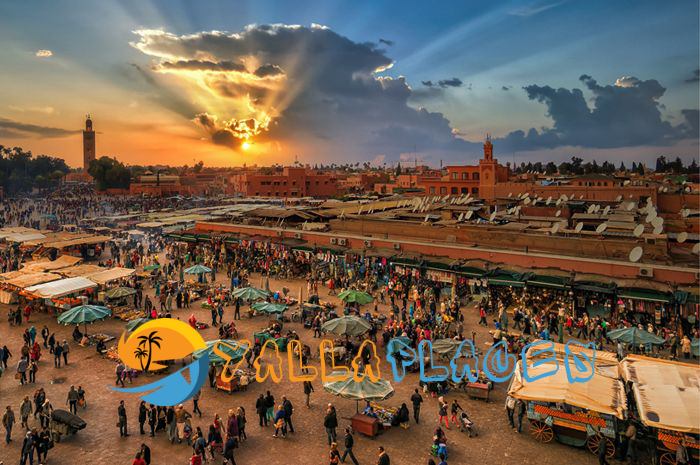
Marrakech, often referred to as the “Red City” due to its iconic red sandstone architecture, is one of Morocco’s most famous and vibrant destinations. It offers a unique blend of history, culture, and modern luxury, attracting millions of visitors each year.
Best Places to Visit in Marrakech
Jemaa el-Fnaa:
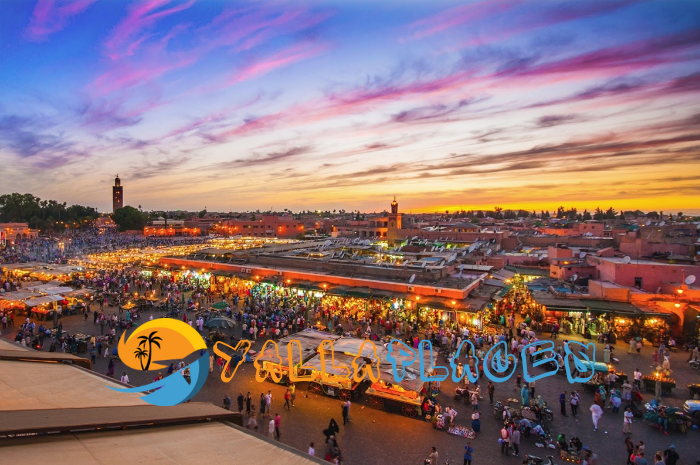
- The main square in the old city, offering live entertainment such as music, storytellers, and snake charmers
- Packed with food stalls and small bazaars.
Majorelle Garden:
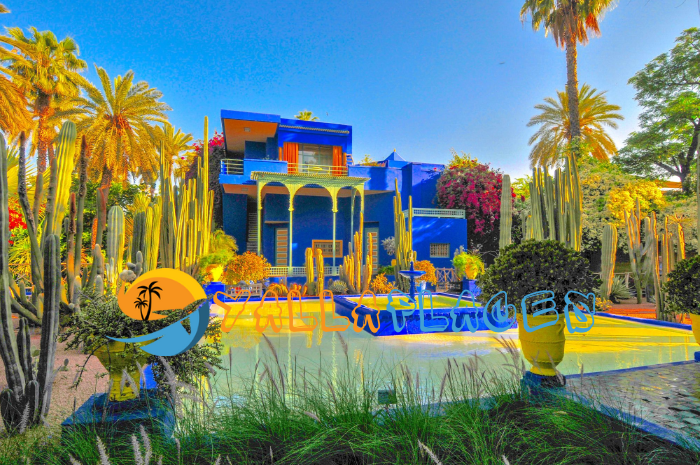
- A stunning garden featuring exotic plants from around the world, combined with beautiful architectural design.
- Once owned by the famous fashion designer Yves Saint Laurent.
Bahia Palace:

- A historical palace showcasing traditional Moroccan architecture with intricate designs and stunning courtyards.
The Medina:
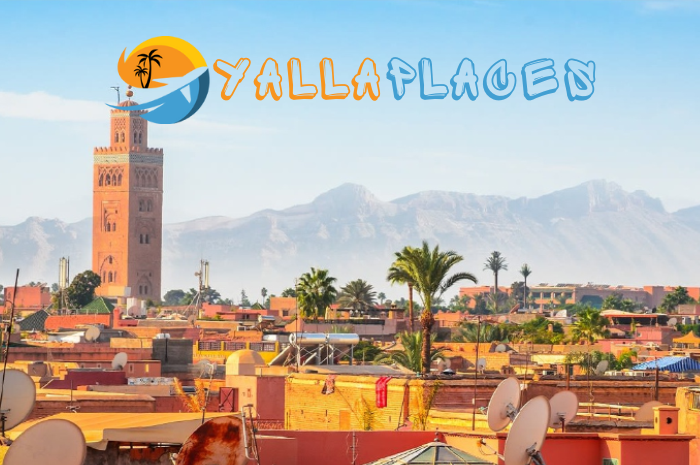
- A maze of traditional markets filled with handmade goods like carpets, pottery, and leather items.
- A perfect spot to soak in the local atmosphere.
Koutoubia Mosque:

- An iconic landmark of Marrakech and one of the largest mosques in the city.
- Non-Muslims are not allowed to enter but can admire its beauty from the outside.
Menara Gardens:

- A tranquil escape from the city’s hustle, ideal for a peaceful stroll or enjoying natural scenery.
Pros of Marrakech
Rich Cultural Diversity:
- Marrakech offers a vibrant cultural experience, from food to music and traditional markets.
- Visitors can enjoy Moroccan hospitality at its best.
Variety of Activities:
- A mix of historical sightseeing and modern experiences, such as staying in a traditional riad or a luxury hotel.
Strategic Location:
- Close to the Atlas Mountains and the Moroccan desert, making it a great base for excursions.
Moroccan Cuisine:
- The city is filled with restaurants serving authentic Moroccan dishes, such as tagine and couscous.
Cons of Marrakech
Crowds:
- Jemaa el-Fnaa and the souks can get very crowded, especially during peak tourist seasons.
High Tourist Prices:
- Some tourist-oriented places and restaurants can be overpriced.
Persistent Vendors:
- Some visitors might find the pushiness of local vendors or guides uncomfortable.
Hot Weather:
- Summers in Marrakech are extremely hot, making it challenging to explore during the daytime.
Marrakech is a city full of life and culture, making it one of the world’s top travel destinations. Despite minor drawbacks like crowds or persistent vendors, the city’s beauty, rich heritage, and unique experiences make it an unforgettable place for anyone seeking adventure and cultural exploration.
Agadir
Agadir is a modern coastal city in southern Morocco, known for its stunning beaches, sunny weather, and relaxed atmosphere. Unlike the historic medinas of other Moroccan cities, Agadir offers a contemporary vibe, making it a favorite destination for beach lovers and those seeking a peaceful retreat.
Best Places to Visit in Agadir
Tamraght And Taghazout:

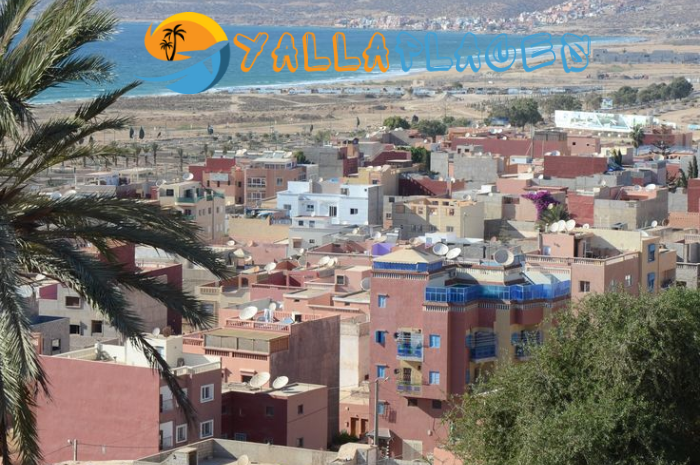
- A charming village located 14 km north of Agadir, famous for its surfing spots and laid-back vibe.
- A must-visit for surfers and beach lovers.
Timlaline Dunes:
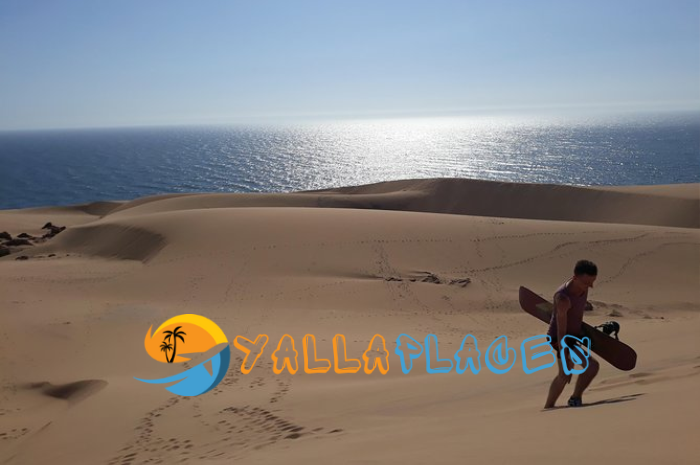
- A hidden gem located south of Agadir, Timlaline is known for its vast golden sand dunes that meet the ocean.
- Ideal for photography, relaxing walks, and enjoying breathtaking sunsets. It’s a peaceful escape for those who love nature.
Imsouane:

- A picturesque fishing village located between Agadir and Essaouira, known for its tranquil beaches and world-class surfing spots.
- Perfect for surfers, food lovers (fresh seafood is a must-try), and anyone seeking a serene, off-the-beaten-path experience. The natural beauty of Imsouane makes it one of Morocco’s most enchanting coastal destinations.
Agadir Oufella:
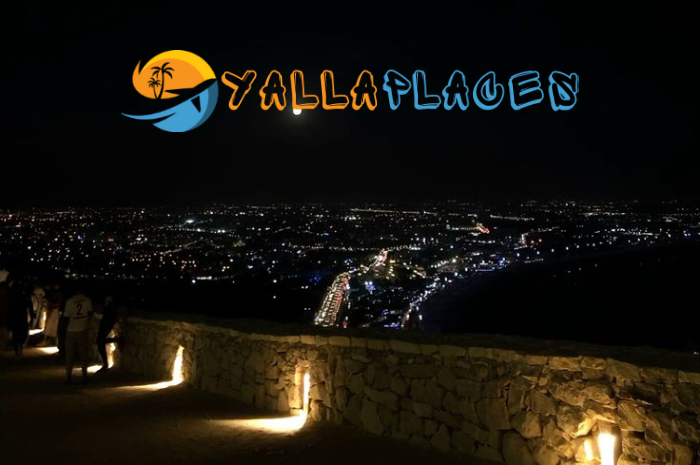
- The ruins of a hilltop fortress offering panoramic views of the city and coastline.
- A historical site with great photo opportunities.
Souk El Had:

- A bustling traditional market where visitors can shop for local goods like spices, clothing, crafts, and fresh produce.
- A great place to experience Moroccan culture.
Paradise Valley:

- A stunning natural valley with clear pools and waterfalls, located about an hour’s drive from Agadir.
- Perfect for hiking, swimming, and enjoying nature.
Pros of Agadir
Beautiful Beaches:
- Agadir’s long sandy beaches, along with nearby gems like Timlaline and Imsouane, offer plenty of options for relaxation and water activities.
Modern Infrastructure:
- The city is well-developed, with clean streets, good roads, and modern hotels, making it comfortable for tourists.
Family-Friendly Activities:
- Attractions like Crocoparc and Valley of the Birds are ideal for families traveling with kids.
Surfing and Outdoor Adventures:
- Nearby spots like Taghazout and Tamraght are perfect for surfing enthusiasts, while Paradise Valley and Timlaline offer unique outdoor experiences.
Calm and Relaxed Atmosphere:
- Compared to busier cities like Marrakech, Agadir offers a quieter and more laid-back experience.
Cons of Agadir
Lack of Historical Sites:
- Agadir was rebuilt after a devastating earthquake in 1960, so it lacks the historic medinas and architecture found in cities like Marrakech or Fes.
Touristic Focus:
- Some travelers feel that Agadir is too modern and lacks the “authentic Moroccan” experience due to its focus on tourism.
Overpriced Services:
- Tourist areas, especially along the beach, can be expensive compared to local markets or less touristic cities.
Windy Beaches:
- The beaches, including Timlaline and Imsouane, can get windy, especially in the afternoons, which might not appeal to everyone.
Agadir is an excellent choice for those seeking relaxation, modern amenities, and outdoor adventures. With nearby natural wonders like Timlaline’s golden dunes and Imsouane’s peaceful coastal charm, it offers something for everyone. While it may not have the historical allure of other Moroccan cities, Agadir’s stunning beaches, family-friendly attractions, and unique experiences make it a must-visit destination for travelers looking to enjoy Morocco’s beauty and tranquility.
Fez
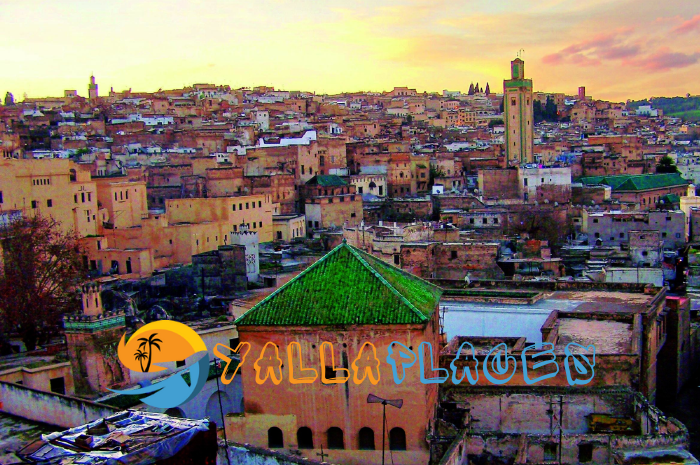
Fez, often referred to as the “Athens of Africa,” is one of Morocco’s most historically rich and culturally significant cities. Known for its labyrinthine medina, ancient universities, and vibrant souks, Fez offers an authentic Moroccan experience that takes visitors back in time. It is a city where tradition and history dominate, making it a must-visit for culture enthusiasts.
Best Places to Visit in Fez
Fes el-Bali :

- A UNESCO World Heritage Site, the medina is a maze of narrow alleys filled with souks, mosques, and madrasas.
- Famous for its bustling atmosphere, traditional craftsmanship, and iconic blue gates (Bab Bou Jeloud).
University of Al-Qarawiyyin:

- Founded in 859 AD, it is recognized as the oldest continually operating university in the world.
- While non-Muslims cannot enter the mosque, the architecture and history make it a landmark worth visiting.
Chouara Tannery:

- One of the oldest and most famous tanneries in the world, where traditional leather goods are crafted.
- Visitors can observe the leather-making process from nearby terraces.
Al-Attarine Madrasa:
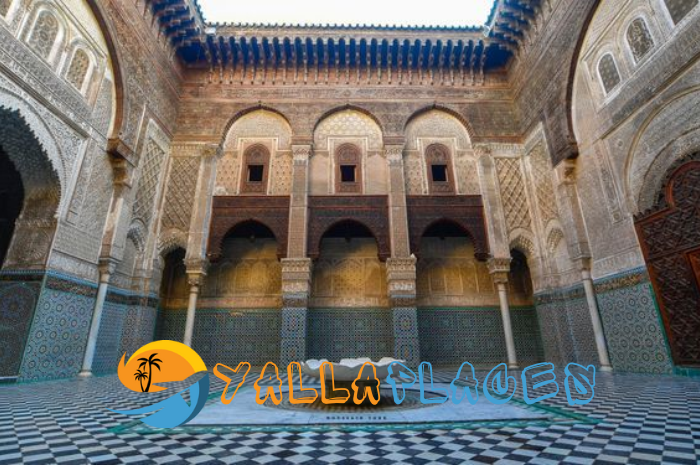
- A beautiful Islamic school known for its intricate tilework, cedar wood carvings, and stunning courtyard.
- A masterpiece of Moroccan architecture.
Dar el-Makhzen :
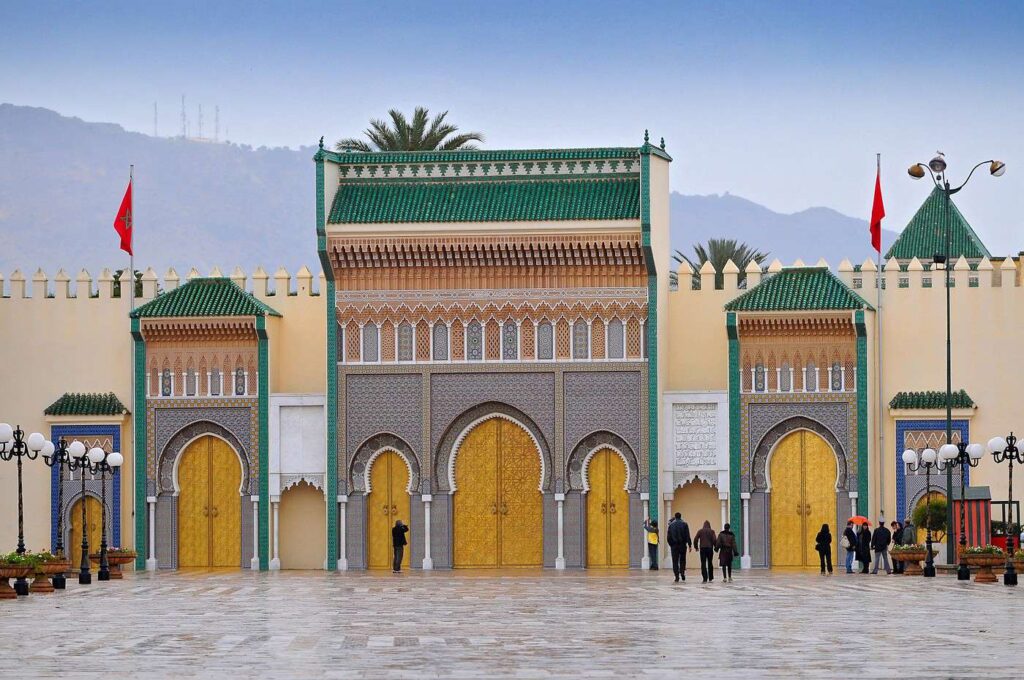
- The palace gates, with their stunning golden doors and zellige tilework, are a popular photo spot.
- Though the palace itself is not open to the public, the exterior is worth admiring.
Bou Inania Madrasa:
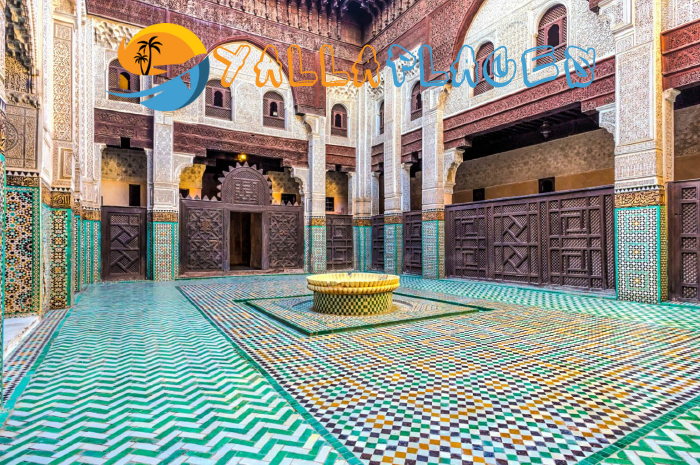
- A well-preserved 14th-century madrasa that showcases exquisite craftsmanship and serves as both a school and a mosque.
- Open to non-Muslim visitors, unlike most mosques in Morocco.
Pros of Fez
Rich History and Culture:
- Fez is a living museum, offering an immersive experience into Moroccan traditions, crafts, and architecture.
Authentic Moroccan Experience:
- Unlike more modern cities like Casablanca, Fez retains its old-world charm and authenticity.
World-Class Handicrafts:
- Fez is famous for its handmade pottery, leather goods, and textiles, making it a great place for unique souvenirs.
Affordable Travel Costs:
- Compared to Marrakech or Casablanca, Fez is relatively affordable in terms of accommodation, food, and activities.
Spiritual and Educational Significance:
- The city’s mosques, madrasas, and religious sites make it a hub for learning and spirituality.
Cons of Fez
Crowded and Overwhelming Medina:
- The medina can be confusing to navigate, with its narrow alleys and constant hustle and bustle. Hiring a guide is often recommended.
Aggressive Vendors and Guides:
- Some tourists find the persistent shopkeepers and unofficial guides to be overwhelming.
Limited Nightlife and Modern Entertainment:
- Fez is more traditional and less suited for those seeking modern entertainment or nightlife.
Weather Extremes:
- Summers can be very hot, while winters are quite cold, especially in the medina’s stone buildings.
Not Easily Accessible by Car:
- Cars are not allowed inside the old medina, so travelers must walk or use carts for transporting luggage.
Fez is a treasure trove of Moroccan culture, history, and spirituality. While the medina’s chaos and aggressive vendors might be challenging for some, the city’s architectural beauty, historical significance, and authenticity make it a destination worth exploring. Whether you’re a history buff, an art enthusiast, or a curious traveler, Fez offers an unparalleled journey into Morocco’s rich heritage.
Marrakech, Agadir, Chefchaouen, Fez, Tangier, Agadir, Essaouira, and Rabat are the top cities to visit for history, culture, and scenic beauty.
The best time is during spring (March-May) and autumn (September-November) when the weather is mild and ideal for exploring.
A minimum of 10-14 days is ideal to explore the highlights of Morocco’s major cities and nearby attractions.
Yes, Morocco is generally safe for tourists. However, visitors should remain vigilant, particularly in crowded areas, to avoid petty theft.
Marrakech and Fez are top choices for shopping, offering everything from spices and textiles to handmade crafts and leather goods.
Fez is home to the ancient Al-Qarawiyyin University, the bustling Fes el-Bali medina, and the Chouara Tannery.
Agadir, and Dakhla are ideal for beaches, offering pristine coastlines and water sports opportunities.
The Moroccan Dirham (MAD) is the official currency. It’s best to carry cash for small purchases in local markets.
While cities like Casablanca and Agadir are easy to explore on your own, hiring a guide is recommended for navigating the medinas in Fez and Marrakech.
Yes, Chefchaouen offers a peaceful retreat with its blue-washed streets, mountain hikes, and opportunities to shop for handmade goods.
Fez is the best city for history lovers, with its ancient medina, historical landmarks, and cultural richness.
Moroccan Arabic (Darija) and Berber are widely spoken. French is commonly used, especially in business and tourism, and English is also understood in major tourist areas.
Yes, Morocco has a well-connected transportation system, including trains, buses, and flights, making it easy to visit multiple cities during a single trip.
Tagine, couscous, pastilla, harira soup, and Moroccan mint tea are must-try dishes available in most cities.
Yes, cities like Agadir and Rabat are especially family-friendly, offering relaxed environments and activities suitable for all ages.
Marrakech is known for Jemaa el-Fnaa square, Majorelle Garden, Koutoubia Mosque, and its vibrant souks.
Popular souvenirs include leather goods, ceramics, argan oil, spices, textiles, and traditional Moroccan rugs.
You can travel by train (comfortable and efficient), buses like CTM or Supratours, or domestic flights for longer distances.
